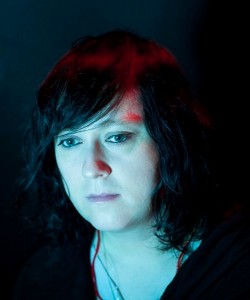 We were totally excited recently to come across Antony Hegarty of Antony and the Johnsons, a performance group firmly grounded in the 2010s. Part social commentators and part Nina Simone-inspired musicians, AATJ was spotlit in the Village Voice on the eve of Swanlights, their MOMA-commissioned performance at Radio City Music Hall.
We were totally excited recently to come across Antony Hegarty of Antony and the Johnsons, a performance group firmly grounded in the 2010s. Part social commentators and part Nina Simone-inspired musicians, AATJ was spotlit in the Village Voice on the eve of Swanlights, their MOMA-commissioned performance at Radio City Music Hall.
In the Voice interview, English-born and transgender Hegarty reflects on the world he inhabits, and touches us at our core. In one moment — among many — of poignance, he relates his experience as a transgender person with the ecological devastation he sees:
“I see them as parallel issues, as a tiny reflection of a greater problem,” he notes. “Even as a transgender person, I’m excruciatingly aware of my privilege as a white male, and the subjugation of women is critical to understanding the subjugation and destruction of the ecology.”
Brilliance! See him working the dual oppressor and oppressed within him? He continues:
“America is less willing to consider a gay or transgender having a platform outside of gender identity,” he says. “But we are barely acknowledging that the weather is changing, either.”
Say it, Antony. Americans’ purported less-willingness to see the world broadly can lead to pigeonholing one another, and to misperceiving the continuing transformation of Earth’s geography. He’s grounded in his emotions when he says, “We need to start grieving, at the very least.”
And then he drops a profound mind-bender:
“People can more easily imagine the collapse of the world than they can imagine stepping away from capitalism or patriarchy.”
We’ve been thinking about this idea ever since we first read it. Do you think it’s true, that capitalism and preserving the world can’t coexist? While it pains our brain to ponder, it’s certainly worthwhile to consider.
Still, he seems hopeful when he thinks about his ethnicity and place in the world. “I am as American as it gets,” he shares.
And we remain hopeful, too. Not only about our ability to solve some of these worldly problems, but hopeful that revealing our whole selves at work, as Antony does, will help lead us there.
Image via


